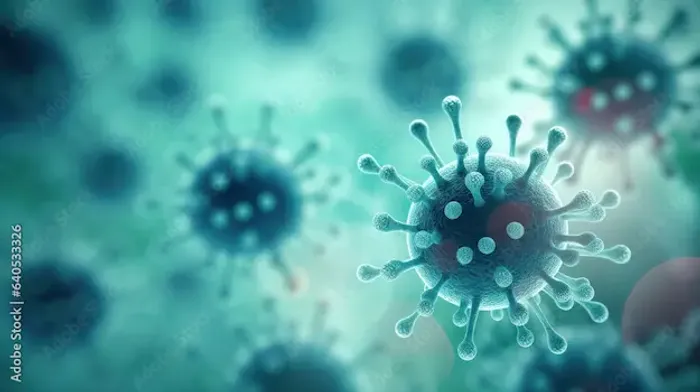Guide to Bird Flu Virus
Learn about the bird flu virus (H5N1, H7N9), how it spreads, symptoms, treatment, prevention, and practical safety tips for poultry, dairy, and travel.

Written by Dr. Siri Nallapu
Reviewed by Dr. Shaik Abdul Kalam MD (Physician)
Last updated on 24th Oct, 2025

Introduction
Headlines about the bird flu virus can feel alarming, especially with reports of outbreaks in birds, occasional human infections, and recent detections in other animals. The good news: for the general public, the current risk remains low, and simple steps can meaningfully reduce exposure. This guide explains what the bird flu virus (avian influenza) is, how it spreads, what symptoms to watch for, and what you can do to protect your family—at home, on farms, and when travelling. We’ll cover practical food safety for eggs, poultry, and dairy, discuss who should consider testing and treatment, and share insights from recent events so you can make calm, informed choices. Along the way, we’ll use plain language to unpack terms like H5N1 and HPAI, and highlight when to seek medical advice. If symptoms persist or you’re worried about a specific exposure, consulting a clinician is always sensible. Our goal is to keep you confident, prepared, and focused on what actually works to lower risk.
What Is the Bird Flu Virus?
Here’s a simple explanation of the virus and its major subtypes:
Avian influenza basics
The bird flu virus refers to avian influenza viruses—grouped mainly within influenza A—that primarily infect birds.
Wild aquatic birds (such as ducks and geese) are natural reservoirs. While many avian influenza infections in birds are
mild, some strains cause severe disease and high mortality, especially in domestic poultry. Occasionally, these viruses
cross species barriers and infect mammals, including humans. Public health attention concentrates on strains that have
caused serious human disease, such as H5N1 and H7N9.
High vs low pathogenicity (HPAI vs LPAI)
Here’s how pathogenicity is classified:
- Low pathogenic avian influenza (LPAI): Often mild or asymptomatic in birds, but can circulate widely.
- Highly pathogenic avian influenza (HPAI): Causes severe disease and high death rates in poultry. H5 and H7 subtypes
can evolve into HPAI. H5N1 is currently the most closely watched HPAI strain due to its impact on birds and rare but
severe human cases.
Notable subtypes: H5N1, H7N9, H5N6
Here’s an overview of key subtypes:
- H5N1: The most globally significant HPAI strain in birds with sporadic human cases and high case-fatality rates
historically. Recent events include spillover to mammals (including 2024 detections in dairy cattle in the U.S.). - H7N9: Caused significant human illness in China in past years, often linked to live bird markets; control measures reduced risks.
- H5N6: Sporadic human cases have been reported in Asia, generally severe.
Unique insight: Think of avian influenza like a family tree with many branches. Public health focus shifts over time
depending on which branch is circulating most widely in birds and which exhibits traits concerning for humans (e.g., severity, spillover, or unusual clusters).
How Bird Flu Spreads in Birds, Humans, and Other Animals
Here’s how the virus moves between species:
Transmission in wild birds and poultry
Wild birds can carry avian influenza viruses in their intestines and respiratory tracts, shedding virus in faeces, saliva,
and nasal secretions. Domestic poultry (chickens, turkeys, ducks) become infected through contact with wild birds, contaminated water, feed, equipment, or the environment. The virus can travel with migratory flyways, and crowded conditions intensify spread. HPAI outbreaks lead to culling to prevent further transmission and protect flocks,
livelihoods, and supply chains.
Spillover to humans and mammals (including cattle)
Humans generally get infected through close, unprotected contact with infected birds or contaminated environments,
especially when handling sick or dead birds or during slaughter/defeathering. In 2024, H5N1 was detected in dairy
cattle in the U.S.; workers on affected farms experienced mild illnesses in a few reported cases. Viral genetic material
was found in raw milk, but pasteurization inactivates the virus, and the commercial milk supply remains safe. Other
mammals (like foxes, cats, or sea mammals) have been infected after exposure to wild bird carcasses or farm
environments.
Human-to-human transmission: what we know
To date, sustained human-to-human transmission has not been documented for H5N1. There have been rare instances
of limited, non-sustained transmission in close contacts. Current assessments from agencies including CDC, WHO, and
ECDC conclude the risk to the general public is low, with higher risk for people who work closely with birds or affected
animals.
Unique insight: Think of exposure as “dose over time.” Most everyday settings don’t provide prolonged, high-dose exposures seen with bird handling or farm work. Targeted precautions for specific activities go further than broad restrictions.
Consult Top Specialists Here
Symptoms and Warning Signs You Shouldn’t Ignore
Here’s what to watch for if infected:
Common symptoms in people
- Fever, chills, cough, sore throat
- Runny/stuffy nose, headache, muscle aches, fatigue
- Conjunctivitis (eye redness/irritation)
- Nausea, vomiting, or diarrhoea (less common)
Onset can be abrupt, and in severe cases, pneumonia and breathing difficulties develop within days.
Red flags and complications
Seek evaluation for:
- Shortness of breath, chest pain
- Persistent high fever, confusion
- Blue lips/face or low oxygen saturation
Complications include viral pneumonia, ARDS, secondary bacterial infections, and multi-organ failure. Historically
reported case-fatality rates for hospitalised H5N1 cases have been high in some settings.
When to seek urgent care
If you have flu-like symptoms after recent contact with sick or dead birds, visited a live bird market, handled raw milk from affected herds, or worked on an affected farm, seek medical advice promptly. If symptoms persist beyond two weeks, consult a doctor online with Apollo 24|7. Severe symptoms warrant emergency care.
Unique insight: Tell your clinician about any animal exposure, even if it feels minor. This context can fast-track testing and treatment.
Diagnosis and Testing: What to Expect
Here’s how diagnosis is made and who needs testing:
RT-PCR and sample types
Diagnosis relies on laboratory testing. RT-PCR detects influenza A and subtypes (e.g., H5). Samples are usually from
the upper respiratory tract (nasopharyngeal swab); lower respiratory samples may be used in severe disease. Eye swabs
may be collected if conjunctivitis is present.
Who should get tested
Here’s who is prioritised for testing:
- People with compatible symptoms AND recent exposure to birds/animals or contaminated environments
- Severe acute respiratory infections without clear cause, especially if linked to outbreaks Clinicians follow public health guidance, which may vary by location and current events.
Getting care: clinic, hospital, and telehealth options
If you meet exposure criteria or feel unwell, contact a healthcare provider promptly. Teleconsultation can help triage symptoms and arrange testing. Specialized influenza A/H5 testing is performed in designated labs; broader health checks (e.g., metabolic labs) can often be done via home collection services.
Unique insight: Keep a brief “exposure note” on your phone (dates, locations, animal contact). Sharing this helps clinicians decide on testing quickly.
Treatment: Antivirals, Supportive Care, and Recovery
Here are some treatment options:
Oseltamivir and early treatment
Oseltamivir is recommended for suspected or confirmed avian influenza in humans, ideally started as early as
possible—preferably within 48 hours of symptom onset. Dosing and duration are determined by a clinician.
Managing complications
Fluids, fever control, oxygen, management of bacterial superinfections, and intensive care for respiratory failure.
Antibiotics treat secondary infections, not the virus itself.
Home care vs hospital care
Mild cases may recover at home with rest, hydration, and isolation. Severe symptoms or comorbidities require hospital-
level care. If worsening, consult a doctor online with Apollo 24|7 to reassess.
Unique insight: Early, proactive communication with your care team often determines timely antiviral use.
Everyday Prevention for Individuals and Families
Here’s practical guidance to lower your risk.
Hygiene and exposure reduction
- Wash hands with soap and water for 20 seconds after outdoor activities, markets, or contact with birds/droppings
- Avoid touching your face with unwashed hands
- Masking and eye protection can help in high-exposure settings
- Don’t handle sick/dead birds; report them to authorities
Food safety: eggs, poultry, and dairy
Here’s how to keep food safe:
- Cook poultry and eggs thoroughly; proper cooking inactivates the virus
- Avoid raw or undercooked poultry products
- Commercial milk is pasteurised; avoid raw milk, especially during outbreaks
Travel and market precautions
Here’s what every travellers should know:
- At live bird markets, avoid direct contact with birds and surfaces; wear a mask and wash hands afterward
- Follow local travel advisories; avoid bringing raw poultry across borders
- Unique insight: Choose cooked egg dishes over runny ones, pasteurised dairy over raw, and well-ventilated markets over crowded indoor ones when feasible.
Backyard Poultry and Smallholder Biosecurity
See how to protect your flock and yourself.
Step-by-step biosecurity
Here’s what to implement:
- Keep poultry separate from wild birds; cover runs; use dedicated footwear/clothing
- Quarantine new birds for 14 days before mixing
- Secure feed and water from wild bird contamination
Cleaning, disinfection, and PPE
Here’s how to disinfect safely:
- Use gloves, eye protection, and masks when handling birds
- Clean organic material first, then disinfect with an appropriate agent
- Respect contact time for disinfectants
What to do with sick or dead birds
Let’s have a look at the proper protocol:
- Use tools and PPE; isolate sick birds
- Contact local authorities or a veterinarian
Unique insight: Keep a “biosecurity station” by your coop with boot tray, disinfectant, gloves, and a small trash roll.
Community and Public Health Measures
Here’s what authorities do and how it affects you:
Surveillance and reporting
Authorities test wild and domestic birds, sequence viruses, and respond to outbreaks early.
Vaccination strategies (poultry and human)
- Poultry vaccination can control outbreaks along with culling and movement restrictions
- Human seasonal flu vaccines do not protect against H5N1; stockpiled candidate vaccines exist
Myths vs Facts About the Bird Flu Virus
Let’s separate fact from fiction:
Debunking common misconceptions
- Myth: “Poultry is unsafe to eat.” Fact: Properly cooked poultry and eggs are safe.
- Myth: “Bird flu spreads easily between people.” Fact: Sustained human-to-human transmission not observed.
- Myth: “All milk is risky.” Fact: Pasteurised milk is safe; avoid raw milk.
How to vet information sources
Here’s what sources to trust:
- Health agencies (CDC, WHO, ECDC), veterinary authorities (USDA/APHIS, WOAH), and local public health
departments. Cross-check sensational claims.
Special Situations and Higher-Risk Groups
Here’s who needs extra precautions:
Poultry workers, veterinarians, and dairy staff
Here’s guidance for workers:
Use PPE, follow biosecurity, and report symptoms promptly. Employers should provide training and access to testing.
Children, pregnant people, older adults, and those with chronic illness
Here’s what high-risk individuals should do:
Avoid contact with sick/dead birds and high-risk environments. Seek medical advice early if symptomatic.
Unique insight: Layered protection—PPE, workplace controls, and seasonal flu vaccination—adds up.
Pets and Wildlife: What Owners Should Know
Here’s guidance for pet safety:
Cats, dogs, and backyard visitors
Keep pets away from sick/dead birds and raw poultry scraps.
Safe practices at home and outdoors
Leash dogs in areas with bird die-offs, dispose of waste properly, wash hands after handling pets.
Unique insight: Switch from raw to cooked/pasteurised products to reduce zoonotic risks.
Cleaning Up Safely After Birds
Here’s how to clean without risk:
How to handle droppings and contaminated surfaces
- Wear gloves, masks, and eye protection
- Moisten droppings with disinfectant to minimise dust; scoop, bag, dispose per local rules
- Clean surfaces first, then apply disinfectant with correct contact time
Protective gear and disinfectants
- Use gloves, dedicated clothing/boots, and respiratory/eye protection
- Use EPA/authority-listed disinfectants effective against influenza viruses
Consult Top Specialists Here
Building Your Personal “Risk Budget”
Here’s how to manage exposure daily:
Assessing exposure in daily life
Consider proximity to birds, duration, and protective barriers (PPE, ventilation, cooking). Small adjustments reduce risk
significantly.
Substitutions that lower risk without sacrificing routine
- Choose pasteurised dairy and cooked eggs
- Buy poultry from reputable sources; avoid live bird slaughter without PPE
- For backyard poultry, invest in covered runs and a simple PPE kit
Unique insight: Small, consistent changes compound into meaningful protection.
Consult Top Specialists Here

Dr. Vivek D
General Physician
4 Years • MBBS
Bengaluru
PRESTIGE SHANTHINIKETAN - SOCIETY CLINIC, Bengaluru

Dr. Anand Ravi
General Physician
2 Years • MBBS
Bengaluru
PRESTIGE SHANTHINIKETAN - SOCIETY CLINIC, Bengaluru

Dr Syed Mateen Pasha
General Physician
2 Years • MBBS
Bengaluru
PRESTIGE SHANTHINIKETAN - SOCIETY CLINIC, Bengaluru

Dr. Harshendra Jaiswal
General Physician/ Internal Medicine Specialist
12 Years • MBBS , MD (General medicine)
Kolkata
108 DHANA DHANVANTARI Clinic, Kolkata
(25+ Patients)

Dr. Syed Ismail Ali
General Practitioner
7 Years • MBBS
Hyderabad
Apollo 24|7 Clinic, Hyderabad
Consult Top Specialists Here

Dr. Vivek D
General Physician
4 Years • MBBS
Bengaluru
PRESTIGE SHANTHINIKETAN - SOCIETY CLINIC, Bengaluru

Dr. Anand Ravi
General Physician
2 Years • MBBS
Bengaluru
PRESTIGE SHANTHINIKETAN - SOCIETY CLINIC, Bengaluru

Dr Syed Mateen Pasha
General Physician
2 Years • MBBS
Bengaluru
PRESTIGE SHANTHINIKETAN - SOCIETY CLINIC, Bengaluru

Dr. Harshendra Jaiswal
General Physician/ Internal Medicine Specialist
12 Years • MBBS , MD (General medicine)
Kolkata
108 DHANA DHANVANTARI Clinic, Kolkata
(25+ Patients)

Dr. Syed Ismail Ali
General Practitioner
7 Years • MBBS
Hyderabad
Apollo 24|7 Clinic, Hyderabad
More articles from Bird flu avian influenza
Frequently Asked Questions
Can I catch the bird flu virus from eating chicken or eggs?
Properly cooked poultry and eggs are safe; avoid undercooked poultry and runny eggs during outbreaks.
Is milk safe with reports of H5N1 in cattle?
Pasteurised milk is safe; avoid raw milk, especially during outbreaks.
What are the first symptoms of avian influenza in humans?
Fever, cough, sore throat, body aches, sometimes conjunctivitis. Severe cases can progress to pneumonia.
Should I wear a mask when visiting a live bird market?
Avoid direct contact with birds, practice hand hygiene, and consider a mask/eye protection in crowded, dusty areas.
When should I see a doctor?
If you have flu-like symptoms after exposure to birds, live bird markets, or affected farms. Persistent or worsening symptoms warrant prompt consultation online with Apollo 24|7.
